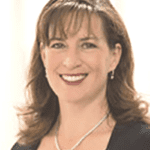Progress Report
New Developments Made in Breast Cancer Detection, Treatment
Questions answered by Dr. Holly Mason
Q: My mother has been after me to go for a mammogram. When should screenings start if one is to detect breast cancer early?
A: There is no simple answer to that question. The benefits of screening are greatest for those women who are most likely to develop breast cancer and for whom early treatment is more effective in treating the disease.
There is a lack of consensus among the leading healthcare organizations as to when to begin screening for the average risk patient. What is recommended today is that women have an honest discussion with their physician about when their screening should begin. Your physician will make a recommendation for you based on your risk factors, including any family or personal history.
After talking with your doctor about screening, you can make an appointment by filling out a form at baystatehealth.org/getscreened or calling (413) 794-2222.

Q: What is the difference between conventional mammography and the newer 3D mammography now being offered?
A: While 2D mammograms take images only from the front and side, 3D mammograms, which we offer, take multiple images or ‘slices’ of the breast from many different angles to create a three-dimensional picture of the breast. The ‘slices’ can reduce images with overlapping breast tissue and give doctors a clearer image of the breast tissue.
Using 3D mammography can make it easier for doctors to catch breast cancer early and reduce the chances of false positive results. However, not all insurance plans cover 3D mammography.
Q. My mother told me she had a breast MRI. What are the advantages of breast MRI as opposed to mammography?
A: First and foremost, a breast MRI is used to supplement, but never to replace a mammogram for screening of the breast. Breast MRI (magnetic resonance imaging) is another way to look at breast tissue. It requires a dose of a dye called gadolinium. A screening MRI may be indicated, in addition to mammography, if you are at increased risk for breast cancer.
At Baystate Health, we follow the American Cancer Society’s (ACS) recommendations for screening MRI for breast cancer, which include a known gene mutation placing you at greater risk to breast cancer, such as the BRCA mutation, previous history of chest radiation, such as for Hodgkin’s lymphoma, or a family history of breast cancer that places you at a greater than 20-25{06cf2b9696b159f874511d23dbc893eb1ac83014175ed30550cfff22781411e5} lifetime risk for breast cancer. You can learn more at the ACS website www.cancer.org.
Q: How great a risk do women face if they have a family history of breast cancer?
A: It depends on how many family members had breast cancer, their age at diagnosis, and the degree of relation to the women who had cancer. There are many other cancers which may be related to breast cancer within a family, such as gastric cancer, pancreatic cancer, colon cancer and prostate cancer, to name a few. A careful family cancer history is important to determine if there might be a genetic component to your risk of developing breast cancer.
At Baystate, we offer our Family Cancer Risk Program for patients who may be candidates for genetic testing due to a family history of breast and other types of cancer. For more information on this program, call (413) 794-8890.
Q: What choices does a woman with a BRCA gene mutation have?
A: There are two main approaches: heightened surveillance or risk-reducing mastectomy, but this is a personal decision. Women who are planning to start a family or have additional children have the option for increased screening by alternating an MRI and mammography every six months to check for cancer. I do not know how old you are or if you have the BRCA gene, but for younger women still in their 20s, the recommendation is for a baseline annual MRI starting at age 25 and beginning mammography at age 30. This option must also include a clinical breast exam twice a year in combination with monthly breast self-exams.
Q: What are the signs and symptoms of breast cancer?
A: Symptoms which indicate a need for evaluation by a doctor include: A new lump in the breast or underarm, irritation or dimpling of breast skin, redness or flat skin in the nipple area of the breast, pulling in of the nipple, nipple discharge other than breast milk that is spontaneous (not occurring with self-examination), including blood, and any change in the size or the shape of your breast or pain in any area of your breast.
Given the fact that screening mammography often detects a cancer when it is very small, most women do not have any symptoms at the time of their cancer diagnosis.
Q: Can you tell me about any new treatment options for women?
A: Breast cancer treatment has changed quite dramatically since 1990 because of early detection, as well as better treatment and a better understanding of the nature and behavior of breast cancer. Most importantly, treatment should be tailored on an individual basis depending on the tumor and the patient in collaboration with the breast cancer team.
In terms of surgery, mastectomy was once the norm. We are now able to preserve the breast and perform a lumpectomy in most patients who prefer this choice. In women who have a cancer that is too large to allow for a lumpectomy with a reasonably satisfactory cosmetic result, medical therapy with chemotherapy or anti-hormone therapy can be given before surgery to shrink the tumor.
In the late 1990s, a procedure called the sentinel node biopsy was developed, where dyes can be injected into the breast to determine which lymph nodes are the first that the breast drains into. If cancer is going to spread outside the breast, it will go to these lymph nodes first. If the sentinel node(s) is negative for cancer, then there has not been any spread to any of the lymph nodes. By limiting the number of lymph nodes that are removed, the risk of swelling of the arm, referred to as lymphedema, can be minimized.
In women over the age of 70 who have a slow growing type of cancer, a lumpectomy may be able to be performed without post-lumpectomy radiation, as long as the patient is willing to take anti-hormone therapy. In addition, some patients may not need to have any lymph nodes removed. These decisions, however, need to occur in discussion with your surgeon, medical oncologist, and radiation oncologist to ensure that the risk of recurrence is low enough to avoid these treatments.
Medical therapy has also improved with the development of different anti-hormone medications to treat breast cancer, as well as different chemotherapy regimens which are better tolerated and more effective. One of the biggest developments is the use of molecular, or gene profiling, of the tumor, which can help in the decision of whether or not chemotherapy will give a benefit above what benefit is seen with anti-hormone therapy, which can then be weighed against the risks of chemotherapy. v
Dr. Holly Mason is Section Chief for Breast Surgery at Baystate Medical Center



Comments are closed.